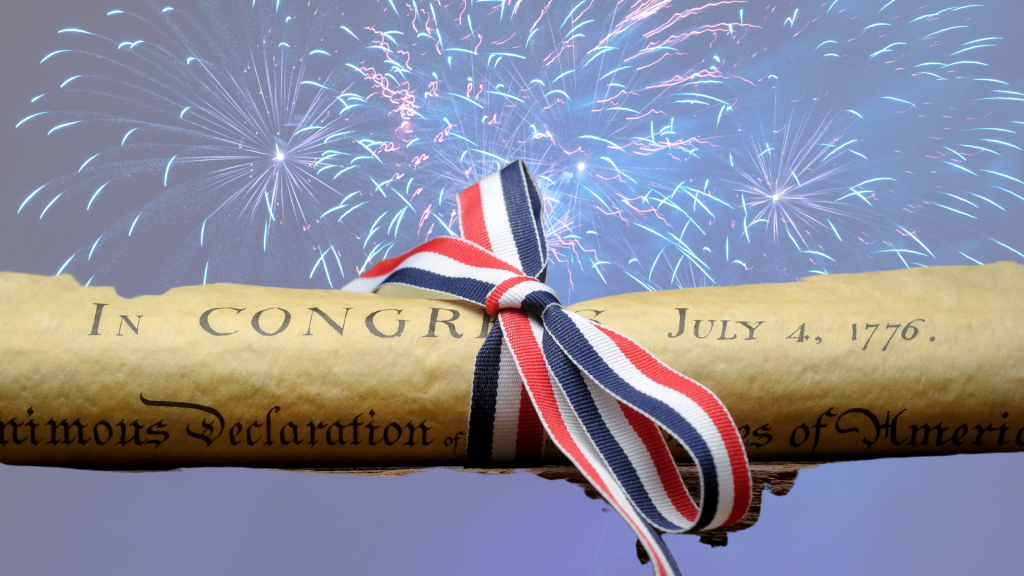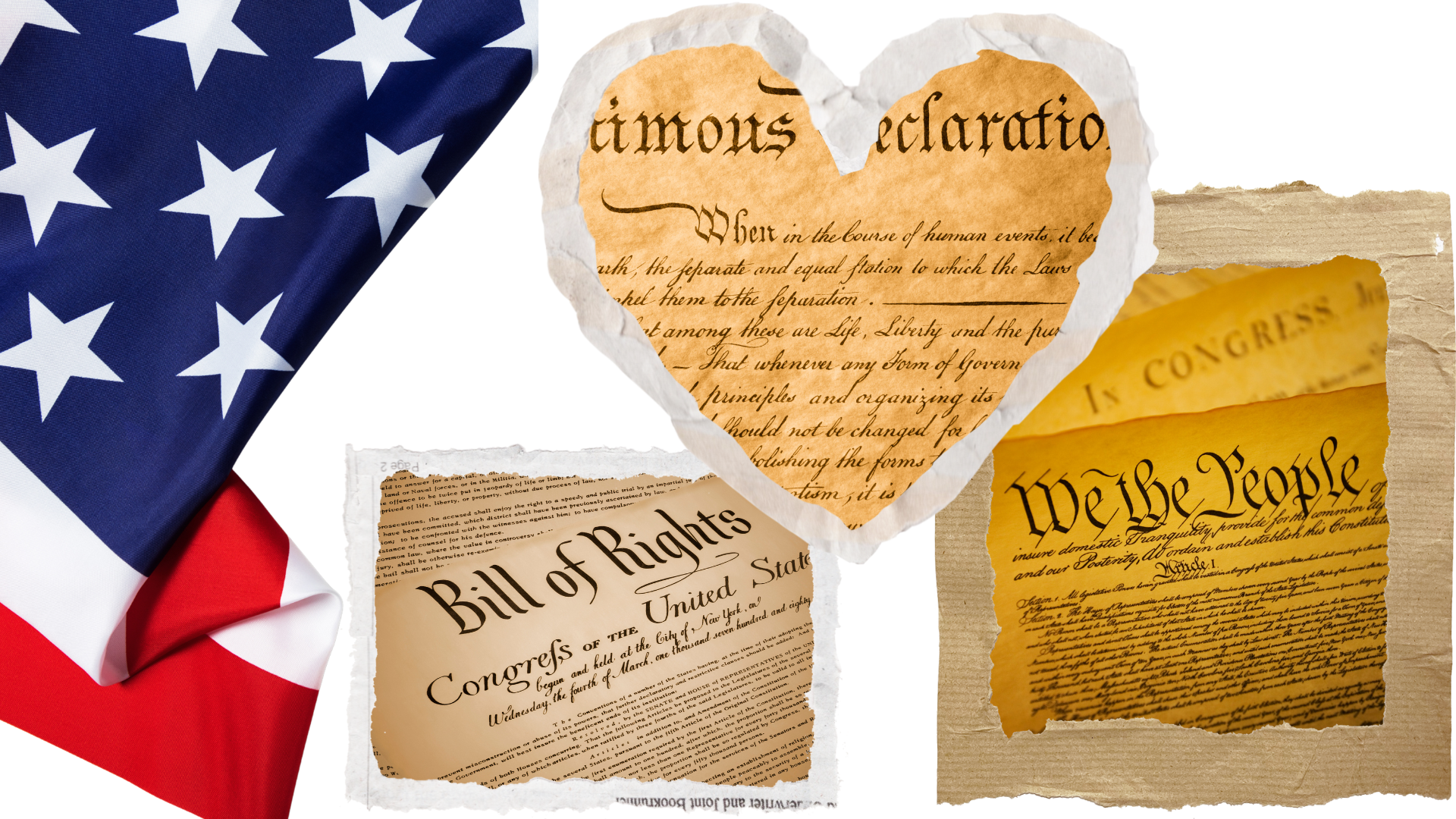
The foundation of the United States government is a rich tapestry of ideals, principles, and laws that have shaped our nation since its inception. Understanding the U.S. Declaration of Independence, the U.S. Constitution, and the Bill of Rights is essential to grasp the core values of freedom, equality, and justice that underpin the American republic. Government employees: You directly serve our democratic republic, but how well do you know the basics of its structure? Let’s explore these three cornerstones of American government, interspersing each section with a short quiz to test your knowledge. Time to dive into what makes our U.S. government unique.
* NO CHEATING! 😊 Test Yourself. It’s not graded! *
The U.S. Declaration of Independence
Test Your Knowledge:
Who wrote the first draft of the Declaration of Independence?
A) George Washington
B) Thomas Jefferson
C) Benjamin Franklin
D) John Quincy Adams
When was the Declaration of Independence adopted?
A) September 17, 1787
B) July 2, 1776
C) August 2, 1776
D) July 4, 1776
Which philosophical concept is central to the Declaration of Independence?
A) Divine Right of Kings
B) Social Contract Theory
C) Mercantilism
D) Absolutism
Understanding the Declaration of Independence
Drafted in 1776, the Declaration of Independence announced the American colonies’ separation from British rule. Authored primarily by Thomas Jefferson, it boldly declared that “all men are created equal” and endowed with unalienable rights, including life, liberty, and the pursuit of happiness. The document was revolutionary, not only because it proclaimed independence, but also because it justified the bold separation decision on the Enlightenment principles of a free societal contract and natural rights.
The Declaration outlined a series of grievances against King George III, including unfair taxation, obstruction of justice, and denial of self-governance. The reasons for rebellion were both a rallying cry for colonists and a signal to foreign nations, particularly France, to support the American cause.
The U.S. Constitution
Test Your Knowledge:
In which year was the U.S. Constitution ratified?
A) 1776
B) 1781
C) 1788
D) 1789
What are the first three words of the U.S. Constitution?
A) “We the States…”
B) “In Congress Assembled…”
C) “We the People…”
D) “To Form a Union…”
How many articles are in the Constitution?
A) 5
B) 7
C) 10
D) 12
Understanding the U.S. Constitution
The U.S. Constitution, adopted in 1787 and ratified in 1789, is the supreme law of the land. Where the Declaration of Independence announced the new nation, this Constitution brought order to it and defined its functions. It established the framework for our federal government. It remains the longest-standing written constitution still in use today. Its seven articles outline the separation of powers among the legislative, executive, and judicial branches, ensuring a system of checks and balances.
The Constitution replaced the Articles of Confederation, to bring strength to the framework of our government. The framers of the Constitution convened the Constitutional Convention to create a stronger balanced government. Key figures like James Madison, often called the “Father of the Constitution,” played a pivotal role in shaping the document. One of the Constitution’s most innovative features is its ability to adapt over time through amendments. This flexibility has allowed it to address challenges such as slavery, women’s suffrage, and civil rights, ensuring its relevance in an evolving society.
The U.S. Bill of Rights
Test Your Knowledge:
How many amendments make up the original Bill of Rights? (There are 27 today.)
A) 5
B) 10
C) 12
D) 15
Which amendment guarantees freedom of speech, religion and the press?
A) First Amendment
B) Second Amendment
C) Fourth Amendment
D) Fifth Amendment
What does the Fourth Amendment protect against?
A) Cruel and unusual punishment
B) Unreasonable searches and seizures
C) Quartering of soldiers in homes
D) Double jeopardy
Understanding the U.S. Bill of Rights
Ratified in 1791, the Bill of Rights comprises the first 10 amendments to the U.S. Constitution. These amendments were added to address concerns from states and individuals wary of a federal government that could be too strong or imposing. They enshrine fundamental liberties, including freedom of speech, the right to bear arms, and protections against government overreach, such as unreasonable searches and cruel punishments.
The Bill of Rights builds upon the philosophical heritage of the Magna Carta and the English Bill of Rights, but it goes further in explicitly protecting individual freedoms. It serves as a safeguard against tyranny, ensuring that the government operates within limits that respect the rights of the people.
Over time, the Supreme Court has interpreted the Bill of Rights to address modern issues, from privacy in the digital age to the balance between free speech and public safety. These amendments remain a cornerstone of American identity, symbolizing the enduring struggle for liberty and justice.
Why Understanding the Foundations of U.S. Government Matters
The Declaration of Independence, the Constitution, and the Bill of Rights are not just historical documents; they are living blueprints that define the principles, structure and freedoms of the United States. These documents reflect the core values of democracy, rule of law, and the protection of individual liberties.
Understanding these foundations is vital for every American, because they empower citizens to engage in informed civic participation. Knowing your rights and how the government operates helps you hold leaders accountable, protect your freedoms, and contribute to the democratic process. It ensures that the sacrifices of those who fought for independence and equality are honored through active engagement and vigilance.
At a time when misinformation and political division are widespread, knowledge of these foundational documents provides a common ground. They remind us of the ideals that unite us as a nation and guide us toward a more perfect union.
By taking the time to review, understand and reflect upon these essential aspects of U.S. history, we not only preserve the legacy of our past but also secure the promise of our nation’s future.

Quiz Answers : Declaration of Independence (B, D, B) U.S. Constitution (C, C, B) U.S. Bill of Rights (B, A, B)
The multi-faceted nature of Susan Powell’s professional background paints the picture of a lifetime learner who has always taken full control of her career path and decisions to apply her learning experiences in the most productive ways possible. Susan has brought her passion for writing and communications to every career upgrade and role, which helped her to secure the Marketing Director position for a cybersecurity company that she holds today. Fueled by her continued enthusiasm for earning applicable certifications, she continues to develop her marketing prowess and channel partner marketing skills. This former elementary teacher-turned-marketer is still a happy work-in-progress.





Leave a Reply
You must be logged in to post a comment.